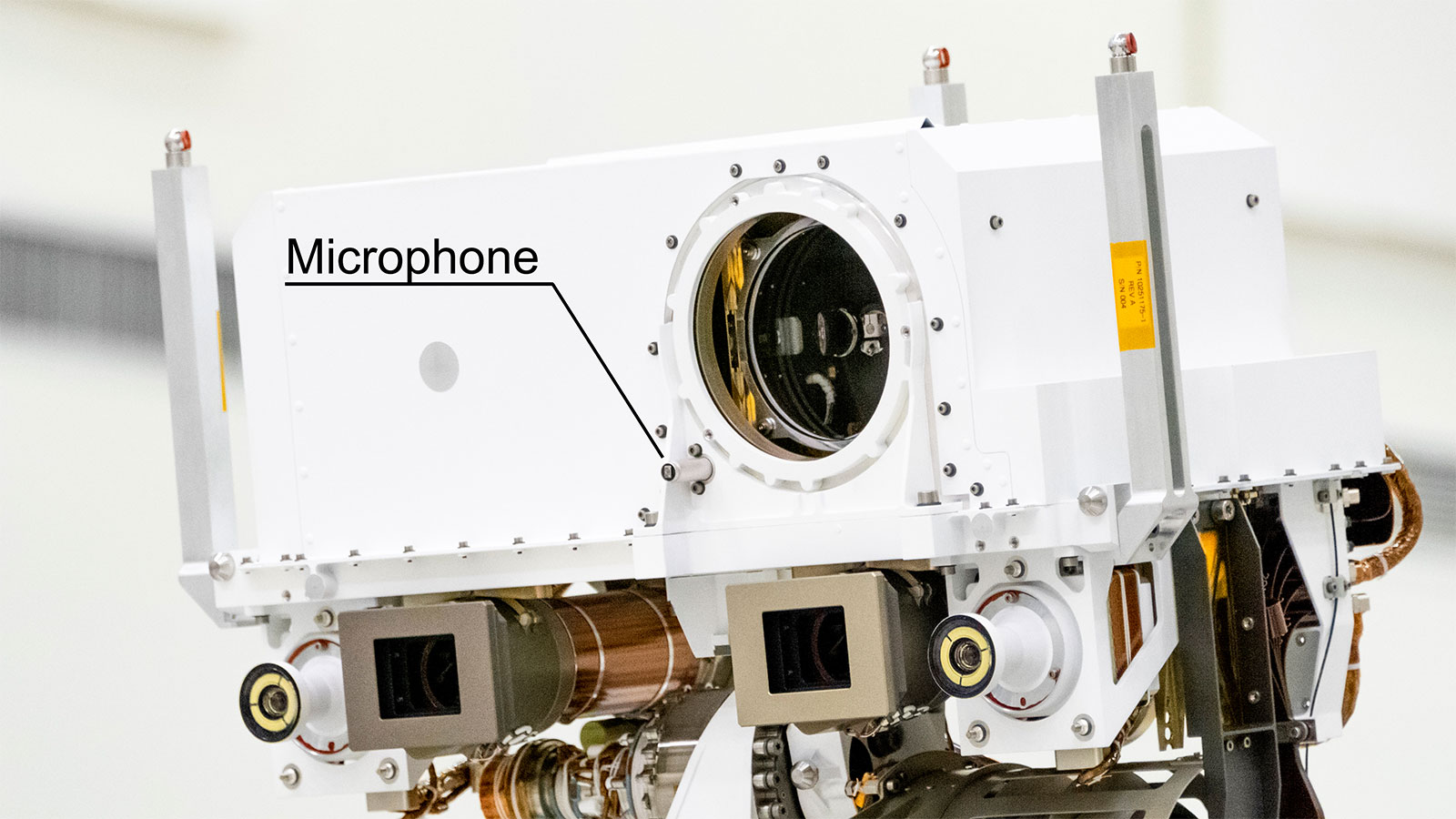NASA Perseverance and its first sounds from space
Listen to a short recording of sounds recorded by NASA’s Perseverance probe (Mars 2020 mission) during its journey to Mars.
Tip:
[SK] Slovenskú verziu tohto článku nájdete na tejto adrese.
Although in space – or in interplanetary space – there is no air through which sound can be transmitted, after all, it is only a sound recording from one of the onboard microphones. In order to make the recording more precise, it is necessary to remember that it is basically not a sound as we would hear it in earthly conditions, but a recording of mechanical vibrations.

Location of the EDL system microphone on board the Perseverance rover. Source: NASA/JPL-Caltech
The Rover Perseverance has two microphones on board. One is intended for recording the soundtrack when using a laser when using the SuperCam device, and the second microphone is intended for recording sound during the landing process – that is, entering the atmosphere of Mars, descending through the atmosphere, and landing on the surface itself (in planetary missions we denote this process by the abbreviation EDL, from English name “entry, descent, landing”). This record will be interesting for later analysis, and of course, let’s be honest – we’ll kind of “feel with our own skin (or with our own ears?)” what it’s like to land on Mars.
The audio recording was recorded on October 19, during an automated test of the camera and sound system, which will be used to record the mentioned landing on Mars in early 2021 in the area of the Jezero crater. The recording itself has 60 seconds after processing.
In the recording, which you can listen to above, the vibrations of the circulation pump of the system for maintaining the operating temperature of the rover are recorded. The task of this system is the thermal protection of all components of the probe against extremely low ambient temperatures. The liquid in the system obtains the necessary temperature from the radioisotope thermoelectric generator and is subsequently distributed through all critical components of the rover using pipes.
I usually publish more interesting information from the background of technological research on Mars, the Solar System, and behind-the-scenes of JPL on this website.
~Jozef
Tip:
[SK] Slovenskú verziu tohto článku nájdete na tejto adrese.
Sources: NASA/JPL-Caltech









